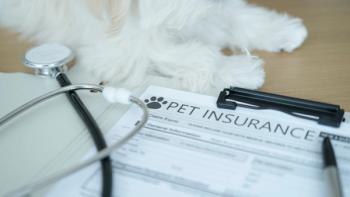
Your mixed veterinary practice needs to be split?
Separating your large- and small-animal practice isn't easy, but we'll help break down the task for you.
This month, we take a look at new set of problems with new theoretical practice owners Drs. Bob Barker and Helen Nay. Both are in their mid-40s and have co-owned Meadowbrook Animal Hospital and Equine Medicine Center since 2005. Dr. Barker originally purchased the practice from a retiring solo veterinary practitioner in 2001. At that time, practice revenue came almost exclusively from equine and dairy cow patients. Small animal medicine was just an adjunct service provided for the convenience of the large animal clients.
Dr. Barker, concerned about the viability of remaining solely a large animal practice, built a freestanding clinic in 2002 and began marketing small animal services to the community. This side of the business immediately flourished, and in 2003 he hired Dr. Nay as a full-time small animal associate. They became equal partners in 2005.
The problem
In 2011, 65 percent of the practice's gross income came from small animal medicine, and in 2012 this grew to 70 percent. Due to a recent back injury, Dr. Barker needs to take a break from large animal work, and now they're trying to figure out how to proceed. Options include a) hiring a large animal associate, b) selling the large animal portion of the business or c) shutting down the large animal segment. While they would like to continue to support the local equine and dairy clients, they don't know if it's realistic.
In order to better evaluate their options, Drs. Barker and Nay know they need to better understand the financial aspects of both sides of the practice—it's not enough to just know the gross revenue from each. Unfortunately, they have always combined expenses and calculated profits for the practice as a whole, so this is going to be trickier than they thought.
The solution
Since the doctors just received their 2012 income statement, they decide to separate the revenue and expense categories on their profit-and-loss statement between the equine, companion animal and dairy cow components. (For tips on how to do this and a sample spreadsheet, see
Next month, we'll tackle marketing initiatives in a cat-only veterinary clinic.
Dr. Karen Felsted, CPA, MS, CVPM, is the president of Felsted Veterinary Consulting. Jessica Goodman Lee, CVPM, joined Brakke Consulting in 2011.
Newsletter
From exam room tips to practice management insights, get trusted veterinary news delivered straight to your inbox—subscribe to dvm360.






